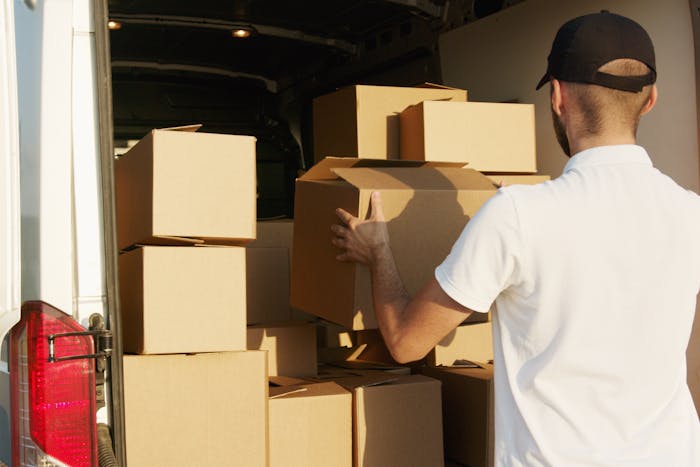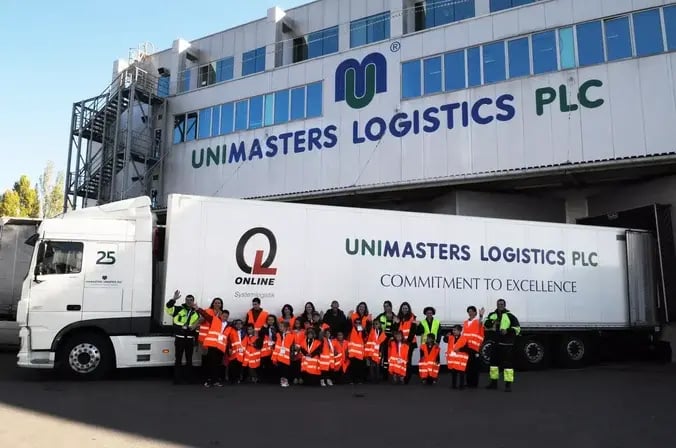The average retail return rate was 14.5% in 2023.
The costs can be even higher for companies that depend entirely on e-commerce and offer free returns. Managing outbound logistics is already tough, but when one in five products gets sent back, it becomes a huge and expensive problem.
However, if you manage returns correctly, you can reduce the impact on your business.
In this article, we’ll explain the step-by-step process of handling returns. We'll also share best practices, and give real-life examples of companies using returns management to their advantage.
Understanding Returns Management
Returns management is a retail and e-commerce process that begins when customers want to return a product. It ends with the business collecting, organizing, and restocking it.
Properly managing returns can help you cut losses by restocking undamaged items for resale.
Also known as reverse logistics, returns management goes beyond final delivery and isn't used for every customer order. This process combines customer support, logistics, and inventory management.
Returns Management Process
.jpg?width=700&height=467&name=pexels-tima-miroshnichenko-6169033%20(1).jpg)
The process of returning a product depends on whether it was bought in-store or online.
For e-commerce businesses and large appliances with home delivery, here are the steps:
- The customer gets the product, is dissatisfied, and asks for a return or refund
The returns process begins when a customer decides they're not happy with the product. It might be damaged, or for apparel, it could be the wrong size or color.
The customer contacts the company to request a return, refund, or exchange through the correct channels.
- The company approves or denies the return, exchange, or refund
Your service staff or dedicated team will decide if the customer is eligible based on your company’s returns policy.
- The company collects the product from the delivery address
Companies that handle returns themselves often find it hard to optimize routes for both deliveries and pickups, especially with last-minute orders.
Companies using third-party logistics (3PL) providers usually provide digital prepaid shipping return labels if they cover returns.
- The product is returned to the sorting facility or warehouse and checked
A delivery driver brings the product back to a sorting facility or main warehouse. The product is then sorted, organized, and checked for quality.
Why did the customer return it? Was it damaged during delivery or return? Is it in good enough condition to restock?
After sorting, an auditor inspects all returned products to answer these questions.
- The product is restocked and added to inventory
If the product is in good condition, it's restocked on the warehouse shelves, added to the inventory count, and can be sold to another customer.
The Difference Between Returns Management and Reverse Logistics

Reverse logistics involves collecting returned products, rental items after their term, or reusable packaging from customers, then sorting and delivering them to the right places.
A reliable reverse logistics process helps speed up the pickup and processing of returns, saving on gas and time. You can also hire a reverse logistics company to handle this for you.
Logistics is a key part of returns management, but managing returns also includes preventative measures, software integrations, and other tasks not usually covered by reverse logistics.
Understanding Return & Refund Policies and How They Can Boost Sale

A return and refund policy outlines how customers can return a product or get a refund.
You need to detail the return conditions, like the time frame for returns, whether the product must be unused, if it needs to be in its original packaging, and whether shipping costs are covered.
Many companies include their return and refund policy as part of their shipping policy, but that's not enough.
Customers like to know the return/refund policy in case the product doesn’t arrive. To avoid issues, make sure your policy is easy to find on your website and in your online store. This way, you can build customer loyalty and gain a competitive edge for your business.
How Three Companies Use Returns Processes to Gain a Competitive Edge
In this section, we’ll look at three companies that have leveraged a well-managed returns process and strong return policies to dominate their industries.
Zappos' Strategy: Free Returns for Used Shoes
Unlike its competitors, Zappos knew that how a shoe fits is crucial to customer satisfaction, not just the price or shipping speed.
Instead of competing on price with other e-commerce giants, Zappos set itself apart by letting customers try on shoes and return them if they didn’t fit.
This approach relies on having a strong returns management system and effective quality control.
Casper’s 100-Night Return & Refund Policy Shakes Up the Mattress Industry
The mattress industry is known for its strict “you break it, you buy it” policies. Even trying out a mattress can make it non-returnable unless there’s a clear manufacturing defect.
Casper changed the game with its 100-night return and refund policy, offering customers a chance to test the mattress fully. This policy became a major competitive advantage and boosted word-of-mouth marketing and customer loyalty.
Casper partners closely with UPS and other shipping companies to manage this process. They track products from the warehouse to the customer’s door and coordinate logistics so their staff can assist with the mattress delivery and setup.
Costco Prioritizes Customer Satisfaction
Although the online return policy has many specific conditions, most customers find the return process quick and easy.
You can even return online purchases to a store, even if that store doesn’t stock the item you bought.
Costco has teamed up with Instacart to handle online sales and deliveries, along with the increased returns that come with e-commerce.
Best Practices for Managing Returns
For large companies with thousands of deliveries and returns each week, managing your workforce and keeping profit margins can be challenging.
By following these best practices, you can enhance customer service and boost your profits:
Add reverse logistics to your delivery process
If you haven’t done so already, start including reverse logistics in your regular deliveries.
With eLogii’s real-time lateness tracking, you can keep an eye on tasks that are falling behind schedule and take targeted action to address them.
.png?width=700&height=500&name=Untitled%20(2).png)
If a driver is already in the area, quickly redirecting them for a return pickup improves the customer experience and saves your company on mileage and labor costs.
Plan Routes for Returns and Deliveries
When creating schedules and routes for deliveries, make sure to include product returns in the planning.
eLogii’s smart planning tools help dispatchers automatically create efficient routes that cover both deliveries and return pickups, taking into account both delivery and pickup time windows.
Thanks to eLogii’s efficient route optimization features, Unimasters Logistics Plc enjoyed a 50% reduction in route planning time. The company also increased its efficiency in terms of routes serviced and vehicle capacity maximization by 76%.

Plan Ahead with Returns in Mind
When planning delivery routes, factor in a realistic buffer for the average number of returns you'll need to pick up.
Anticipated returns should also influence your plans for restocking products in your warehouses.
eLogii’s weekly planning tools help you handle changing demand without having to increase your workforce or delivery fleet.
Boost Capacity for the Holidays
During the holiday season, expect not just a rise in sales but also a surge in product returns.
The holiday gift-giving season leads to many return and refund requests due to incorrect sizes or duplicate gifts.
Customers are returning billions worth of online purchases during the holidays.
Without proper planning, this can create a major operational challenge and slow down your delivery operations.
eLogii’s flexibility allows you to easily adjust your delivery team and routes to handle the increased demand.
FAQ About The Returns Management Process
Final Thoughts
You don’t need to invest in costly returns management software to start enhancing your returns process.
With flexible route optimization tools like eLogii, you can easily integrate return pickups into your delivery routine. Making the returns process more convenient and faster will boost customer satisfaction and improve your profits.